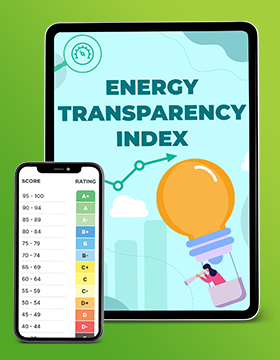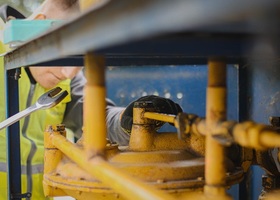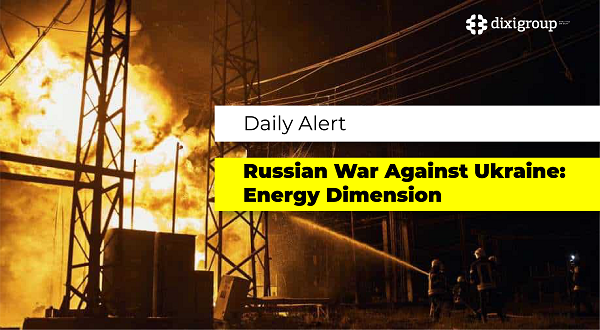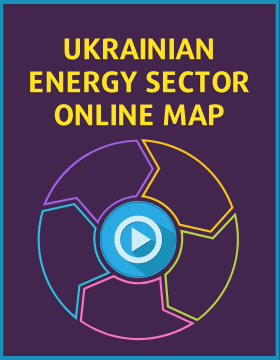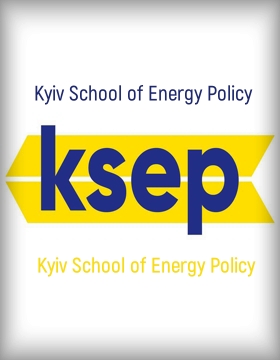Rome Agreements: Where is Ukrainian energy headed?
Key findings from the Ukrainian Recovery Conference

The International Conference on the Recovery of Ukraine (URC), which took place this week in Rome, confirmed the key role of the energy sector in the modernization of the country and the development of its integration with the EU. The event, which brought together over four thousand participants, saw the conclusion of numerous agreements on cooperation between government structures, specialized organizations and businesses, as well as strategic discussions on promising areas of cooperation between Ukraine and Western partners.
Summing up the results of the URC, Ukrainian Energy offers its readers an overview of the key events and agreements from this event, which will determine the further dynamics of the energy sector and the economy in the country.
New Horizons
According to preliminary estimates, agreements totaling over 19 billion euros in investments and loans for private and public projects were concluded during the URC in Rome.
This sum can be considered an indicative response to the call of Italian Prime Minister Giorgi Maloni to businesses, donors and political partners to invest in the development of the Ukrainian economy. “Do not be afraid to participate in the reconstruction of Ukraine, because investments in Ukraine are investments in the growth of Europe and the security of our citizens. Italians were able to create an economic miracle on the ruins of World War II. I believe that the URC in Rome can be the beginning of a Ukrainian economic miracle,” she said at the opening of the conference on July 10.
Ukrainian President Volodymyr Zelenskyy noted the importance of joint efforts. “We need to create a coalition for reconstruction. Let this very moment be its beginning. Now we have a real opportunity to launch a new wave of progress. We need a Marshall Plan-style approach, and we must develop it together,” he said. The head of state pointed out not only the importance of directing frozen Russian assets and the income from them to the reconstruction of Ukraine. “We also need a clear system of reconstruction - a special recovery fund and financing at different levels: for the state budget of Ukraine and local communities,” he added.
The most ambitious result of the URC was the creation of the European Flagship Fund for the Reconstruction of Ukraine, announced in Rome by the President of the European Commission, Ursula von der Leyen. “We are literally betting on the future of Ukraine, using public funds to attract large-scale investments,” she said.
The goal is to mobilize €500 million of private capital by 2026 to rebuild the Ukrainian economy through a combination of grants, guarantees and investments.
As the President of the EC said, this is the largest equity fund in the world, which will promote investments in key areas: energy (primarily renewable energy sources), infrastructure, modern industrial technologies, critical raw materials and the production of dual-use goods. It was founded jointly with Italy, Germany, France, and Poland.
The starting capital of the European Flagship Fund is 220 million euros. In addition to the European Commission (through the Ukraine Investment Framework), its first investors were the European Investment Bank (EIB), Kreditanstalt für Wiederaufbau (KfW, Germany), Cassa Depositi e Prestiti (CDP, Italy), Proparco & Bank Gospodarstwa Krajowego (BGK, Poland). The company that will manage the fund's activities is planned to be selected through a competition to be held during July-October of this year. "It is expected that the initial investments in the projects will be made by the end of 2026," the Ministry of Economy of Ukraine reported.
Energy mix
The energy sectors that Ukraine is betting on during the recovery are the development of "green" energy, nuclear generation, and natural gas production. These areas, according to experts, will help the country not only integrate with the European Union, but also strengthen its competitiveness. This, in particular, was said by DiXi Group President Olena Pavlenko during the discussion “Clean Industrial Transformation: Ukraine’s Strategic Role in the EU Agenda”, organized in Rome together with the Florence School of Regulation (FSR). She emphasized that the mentioned sectors “can help our country become a full-fledged part of the EU on the eve of membership, from which not only it but also the European Union will benefit”
“Ukraine is not only a beneficiary of European support, but also a real source of inspiration. By helping it, the EU is actually helping itself to be more competitive and innovative,” emphasized FSR Director Leonardo Meus.
One of the bright examples of such mutually beneficial cooperation, European Commissioner for Energy (2019-2024) Kadri Simonson named the interconnected electricity market with over 400 million customers in 24 countries. “The ability to export Ukrainian electricity to European neighbors is not only about trade, but also about Ukraine’s contribution to the EU’s energy security, to strengthening European resilience through the increase in renewables,” she emphasized.
Thanks to a strong gas sector - gas deposits and infrastructure for its transportation and storage, as well as ambitious plans for decarbonization of the industry and production of renewable gases, Ukraine is able to replace Russian fossil fuels on the EU market. “Ukraine has a unique resource - over 30 billion cubic meters of underground gas storage capacity... More than 80% of our capacity is located near the western border, which makes gas storage profitable for European partners... who can quickly deliver significant volumes of gas to consumers in case of unforeseen situations,” said Roman Malyutin, head of the state-owned company Ukrtransgaz.
Nuclear revival
The growth in demand for electricity and the desire to reduce carbon emissions in order to combat global warming have triggered a revival of nuclear energy in the world. The construction of nuclear power plants and small nuclear reactors is seen as a key component of the future energy landscape in the world.
“A number of global companies are investing in nuclear energy. And everyone has their own explanations why… One of them is investing in artificial intelligence, which is almost impossible without nuclear energy. And it is very important that we are seeing a real revival of nuclear energy, and I am very glad that Ukraine is one of the countries that is following this path and creating opportunities for a nuclear renaissance,” said Energy Minister Herman Galushchenko during a discussion in Rome. He believes that Ukrainian nuclear power plants should work to strengthen Europe, which will increasingly need more and more electricity.
“For Ukraine, nuclear generation is vital. It provides up to 60% of all electricity during peak consumption hours. We plan to increase our capacity. After all, energy is the first thing that will start the country's recovery,” the minister noted.
He believes it is advisable to attract private investment in the construction of nuclear power units, for which Ukraine should adopt the appropriate law. “In fact, there are many private nuclear power plants in the world. We should do the same in Ukraine. We need to adopt a law. It is not easy from a political point of view, but we will do it,” said Herman Galushchenko.
Evidence that the Ukrainian nuclear industry strives for modernization and development was the signing of a number of memorandums on the sidelines of the URC. In particular, the Ministry of Energy agreed on cooperation with the IAEA (International Atomic Energy Agency), and the state operator Energoatom - with Holtec International and Westinghouse.
Green light for RES
The main achievement of the URC for the direction of “green” generation was the launch of the Ukraine Renewable Energy Risk Mitigation Mechanism (URMM), which was announced by the European Bank for Reconstruction and Development and the European Commission. “This is a unique de-risking tool designed to unlock €1.5 billion in investments in 1 GW of new renewable energy capacity,” the European-Ukrainian Energy Agency (EUEA) said. It also noted that the European Union has already approved €180 million to support the mechanism under the Ukraine Investment Framework (UIF), and the Netherlands plans to provide €12 million in grants. And this is just the beginning, as other European governments also plan to join.
“The URMM addresses one of the key constraints to the development of renewables in wartime – the risk of guaranteed electricity buybacks. The mechanism guarantees a minimum electricity price for each private project, giving banks the confidence to provide financing for new generating capacity at a critical time for the country,” the EUEA explained.
For its part, DTEK - the largest private energy company in Ukraine - announced at URC the transition to the stage of practical implementation of a new "green" project together with the American Fluence - this is the launch of one of the largest energy storage systems in Eastern Europe with a capacity of 200 MW, located at six locations. "In total, the system will be able to store 400 MW/h of electricity, enough to provide electricity to 600,000 Ukrainian homes for two hours," DTEK reported. It is expected that commercial operation of the project and provision of services under the contract with Ukrenergo will begin in October 2025 with the start of the heating season.
Mutual benefits
It is obvious that the main impetus for the implementation of the ambitious projects discussed by the URC participants will be the end of the war in Ukraine. According to the latest government estimates, the reconstruction and modernization of the country will cost a total of $ 1 trillion over 14 years. This was announced by Prime Minister Denys Shmyhal, speaking at a meeting of the Ukrainian Platform of Ministerial-Level Donors within the framework of URC-2025.

